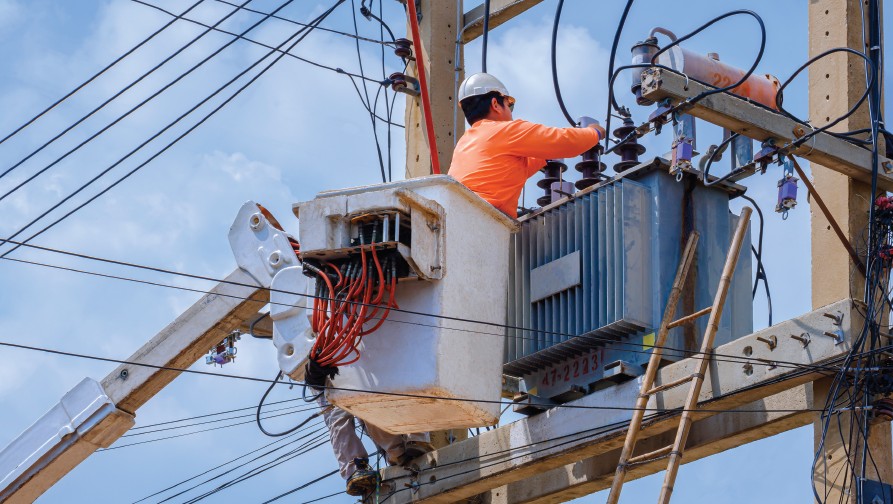It is an interesting time to be a part of the electrical industry. A growing shortage of workers, coupled with continued growth in construction activity, has left many within the industry scrambling to find solutions to unique problems. For example, the last of the Baby Boomer generation is looking toward retirement. Unless it is transferred to other workers on their way out, years of valuable industry knowledge will be lost upon their retirement. Determining how to capture that knowledge and pass it along to those who remain before more senior workers retire will be paramount to continued success and productivity as an influx of new workers begin to enter the industry. As the transfer of this knowledge takes place to the next generation of workers, opportunities also exist to change our old ways, dare I say, bad habits. An opportunity exists to make worker safety the priority that it should have always been.
Yes, there are many companies out there that have always valued worker safety and have built a culture that reflects that, but there are also many companies that have not. Some may, at minimum, turn a blind eye to known risks or, even worse, add to the danger. In order to mitigate risks to worker safety, it must start with company leadership fully supporting the creation and implementation of an effective safety plan. It must then be supported by supervisors, peers, and those individuals who are exposed to the specific risks. Ultimately, it is the individual who is personally exposed to the risk that decides whether or not to perform the task, given the information they have at hand. Have they been deemed qualified by demonstrating skills and knowledge to perform the specific task? Have they received the proper safety training so they can identify any hazards and in turn, reduce any associated risks? By NFPA 70E®, Standard for Electrical Safety in the Workplace® definition, are they qualified to perform the task?
After more than three decades in the electrical industry, I have seen plenty of scenarios where individuals decide to perform a task they were clearly unqualified for and expose themselves, and in many cases others, to unnecessary risk. Maybe it was work that was performed energized because it was requested of them, but there was no reason it could not have been done de-energized other than inconveniencing those who wished the power to stay on. It could have been due to peer pressure to “just do it” because “I’ve done that plenty of times and been fine.” Just today, on a social media electrical discussion board, I saw someone post a picture of a tool that clearly wasn’t rated for energized work that they modified themselves with nonconductive material in order to perform the task. I was amazed as I read the comments. For every comment that told the individual that it was a bad idea, there were four comments from individuals that gave examples of something they’d done similarly, many with a boastful context to them. This led me to ask myself the question: have we really fostered an environment within our industry where 80 percent of workers are more interested in creating risks versus mitigating them?
It is hard for me to imagine a world where a person would be comfortable in a career where rolling the dice would decide whether or not they go home safely that night. I don’t believe that eighty percent of the industry would truly make that choice if they had all of the information about the risk involved. If that is our reality, then we have desperately failed the electrical industry. What I truly believe is that much of the industry just has not received proper training and knowledge when it comes to electrical safety. They operate within the parameters of what they have been trained to do by others who are also not doing it safely, and it is indoctrinated into everyone they teach themselves moving forward. It has become a vicious cycle of individuals not using safe work practices around electricity and managing not to become injured based on sheer luck. In a casino, maybe, but when you are using luck as your guide when working with electricity and the house wins, your life could be over.
With the influx of new workers entering the industry, the time is now to flip the script regarding electrical safety. We need to ensure that all workers are properly trained to identify and avoid risks, know how to work safely when risks cannot be entirely avoided, and are willing to speak up to share their knowledge when they see others doing something that is electrically unsafe. It will take all of us working together and sharing our experiences and knowledge to achieve this goal. I will take the lead to get us started.
For a good portion of my career, while physically working on the job site as an electrician, I operated under the premise that using personal protective equipment (PPE) was justification for performing energized work. If it were not convenient to deenergize a circuit or equipment, I would just grab PPE, such as rubber voltage-rated gloves, and perform the work energized. I cannot begin to count how many overhead electrical services I changed out and tied the service entrance conductors into the live utility overhead conductors while wearing rubber-insulated gloves and leather protectors. My thought was always that PPE was intended to protect me, and as long as I was using it, then it minimized the risk of making any live work justifiable. It was not until later in my career that I was introduced to the Hierarchy of Risk Control (HoRC) Methods, where I found out that PPE is actually the last option that should be utilized for controlling risk. As a good friend of mine so eloquently relayed it to me, “even properly used PPE will not stop you from getting injured; it will just let you live to talk about it.” As specified in 110.5(H)(3) of NFPA 70E, the HoRC consists of, in the order in which they should be applied (most effective to least effective):
- Elimination
- Substitution
- Engineering Controls
- Awareness
- Administrative Controls
- PPE
The ideal way to handle any risk is to eliminate it altogether. From an electrical perspective, we are starting to see this more and more during initial designs and redesigns using methods such as Prevention through Design (PtD), which often incorporates ANSI/ASSP Z590.3, Prevention Through Design Standard. Substitution can be done by replacing an initial risk with a lesser risk, such as modifying control circuitry to operate at 24 volts instead of 120 volts. Guarding energized parts by using an arc-rated blanket while performing a task is an example of utilizing engineering controls. Proper signage installed on all equipment raises awareness, such as installing labels on the equipment that specify the arc flash boundary and the available incident energy or arc flash PPE category that applies. Training, retraining when necessary, and determining qualified individuals are all part of administrative controls that must occur before an individual even thinks of suiting up in PPE. And finally, PPE is the last option for reducing risk. I spent years being wrong in using PPE as my first option, and I am not afraid to admit it, because my hope is that by admitting it, it will help someone else know how to mitigate risk when working around electrical hazards properly. Preventing their life from becoming documented as a statistic.
As the changing of the guard takes place in the electrical industry, it’s important that we provide new guards with additional armor to protect themselves when battling electrical safety risks. Knowledge is the additional protective armor that they need. I encourage you to be an advocate, share your knowledge, and speak up when someone is at risk. Our mistakes do not have to be the foundation for the next generation of electrical professionals. We are all in this together.















Find Us on Socials